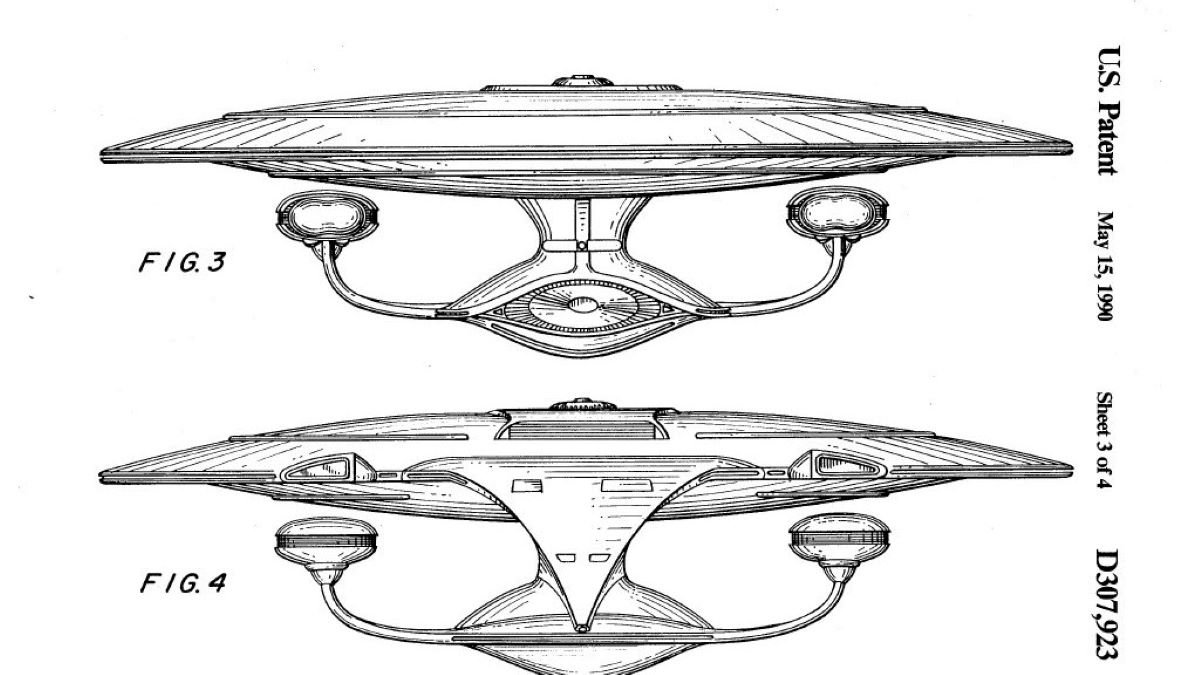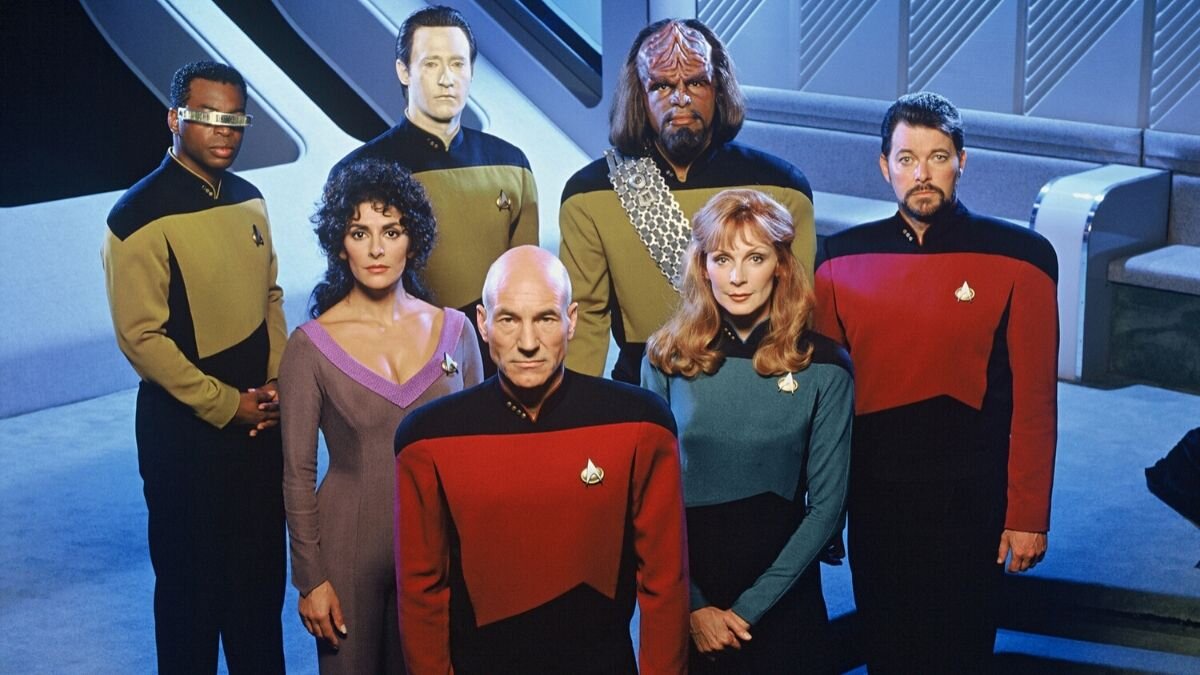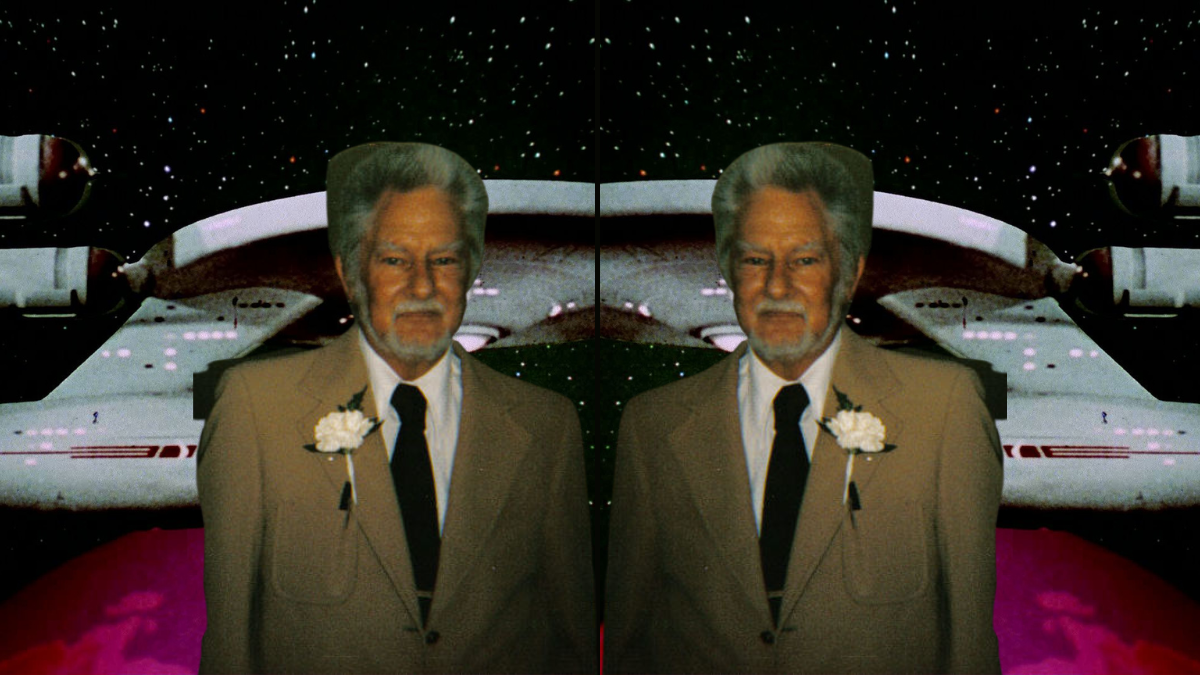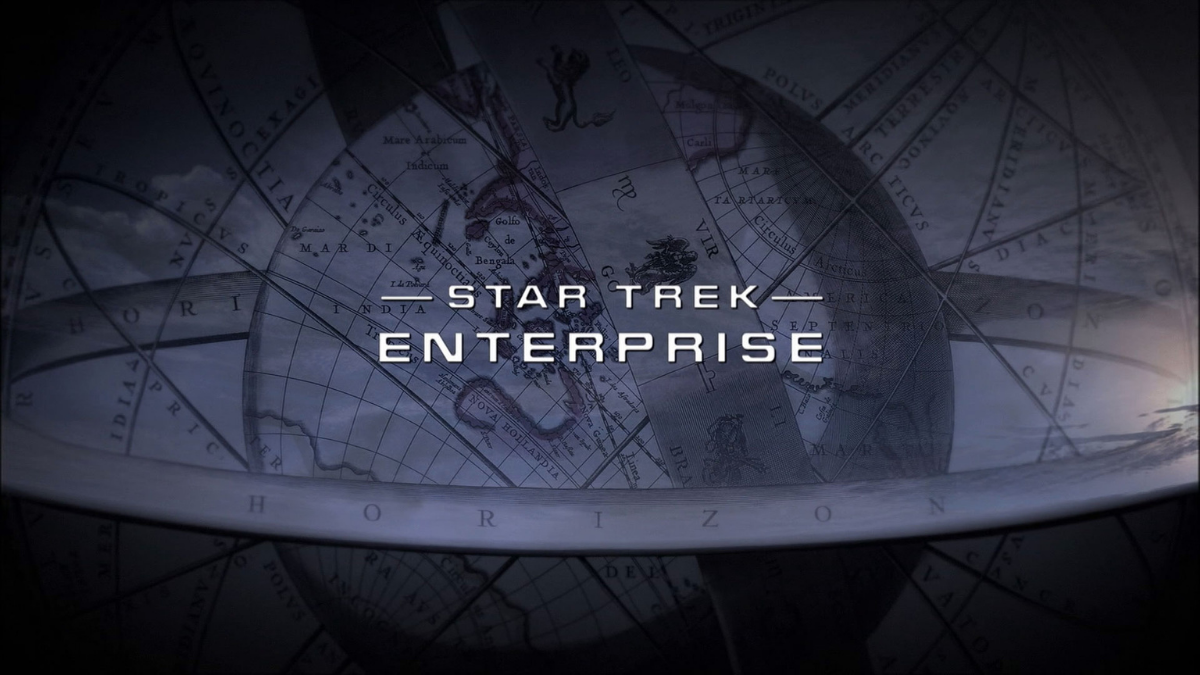TODAY IN STAR TREK HISTORY: The Design of the Enterprise-D Is Patented

Image: CBS Studios / USPTO.
MAY 15, 2023 – On September 3, 1987 Paramount Pictures Corp. filed a patent with the United States Patent and Trademark Office. On September 28, 1987, when Star Trek: The Next Generation premiered, Star Trek fans got their first look at the ship that was the subject of that patent application. Finally, on today’s date in 1990, long after the USS Enterprise-D had left spacedock, the patent on her design was granted.
Patent number Des. 307,923 describes the “ornamental design for a toy spaceship,” and includes five figures showing the design from various external perspectives, or “elevational views.” The term of the patent was for fourteen years, so it expired on May 15, 2004, and on February 2, 2006, the patent was reassigned to CBS Studios, Inc. (For what it means to have legal rights regarding an expired patent, please consult your friendly neighborhood patent attorney.)
The “inventor” on the patent, the sole individual given the credit for redesigning the iconic USS Enterprise, was Andrew G. Probert.
Probert had been around the Star Trek franchise since 1978, when Art Director Richard Taylor brought him in to continue design work on the upgraded Enterprise for Star Trek: The Motion Picture. There is also a patent for TMP’s Enterprise, on which Probert is listed as the inventor, despite design input from others, including Matt Jeffries. In addition, Probert was the inventor on the design patents for the Vulcan shuttle, Surak, as well as the Klingon Empire’s K’t’inga-class starship.
For TNG, Probert designed interior sets, including the bridge of the Enterprise-D. According to Memory Alpha, producer David Gerrold noticed a sketch Probert had done of a future Enterprise, which led to Probert designing the Galaxy-class. Probert left Star Trek after the first season of TNG.
In 2017, Probert addressed Doug Drexler’s class at Art Center College of Design on the topic of redesigning cultural icons. Probert said that the key is to apply logic such that the new designs “work” and are clearly part of the same family of designs as the original. One initial idea he had for a new Enterprise was to lower the warp nacelles so that they were closer to the center of mass of the ship. He continued to sketch ideas because “even though you might have a great idea at the beginning, you want to continue to explore ideas just to prove that, in fact, you did have a great idea right off the bat. The advantage to continuing to sketch is that you might stumble into an idea that you like even better.”
Despite the simplicity of the drawings that ended up in the design patent that was granted 33 years ago today, the ideas and the sketches continued to flow until they coalesced into the Enterprise-D we know and love.
David is a contributing writer for Daily Star Trek News on the Roddenberry Podcast Network. He is a librarian, baseball fan, and book and movie buff. He has also written for American Libraries and Skeptical Inquirer. David also enjoys diverse music, but leans toward classical and jazz. He plays a mean radio.






